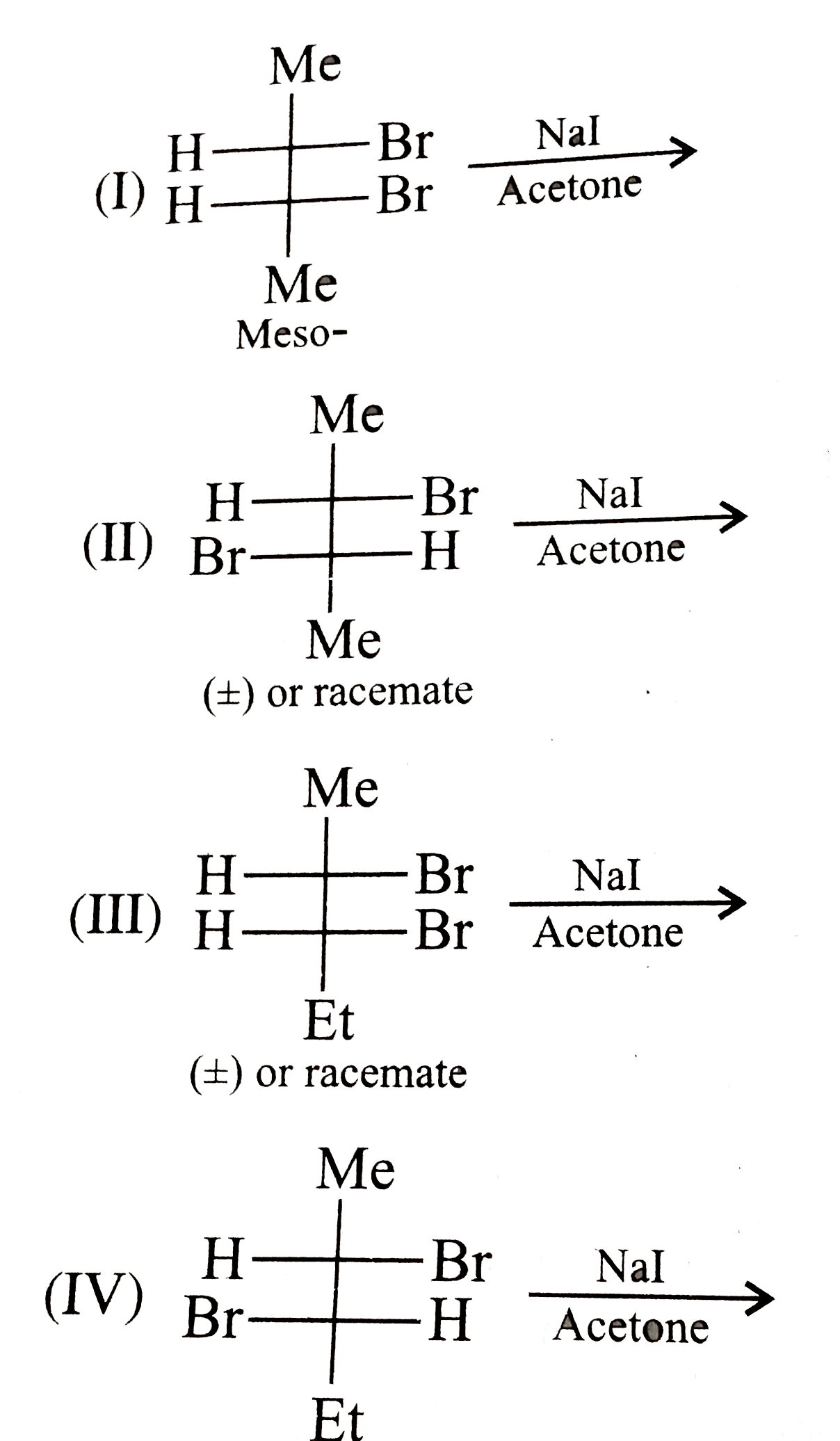In the reaction, R−≡−RBirch−−−−−→reduction  source of two H atoms which are added to alkyne to give trans-alkene is:
source of two H atoms which are added to alkyne to give trans-alkene is:
A
(a) NH3
B
(b) EtOH
C
(c) Et−NH2
D
(d) Both (a) and (c)
Video Solution
Text Solution
The correct Answer is:D
|
Answer
Step by step video, text & image solution for In the reaction, R--=-Roverset(Birch)underset(reduction)rarr source of two H atoms which are added to alkyne to give trans-alkene is: by Chemistry experts to help you in doubts & scoring excellent marks in Class 11 exams.
Updated on:21/07/2023
Related Playlists
- BOOK - CENGAGE CHEMISTRYCHAPTER - ALKYNESEXERCISE - Exercises (Archives - Single Correct Answer Type)6videos
ALKYNES
- BOOK - CENGAGE CHEMISTRYCHAPTER - ALKYNESEXERCISE - Exercises (Archives - Fill in the Blanks Type)3videos
ALKYNES
- BOOK - CENGAGE CHEMISTRYCHAPTER - ALKYNESEXERCISE - Exercises (Multiple Correct Answers Type)25videos
ALKYNES
- BOOK - CENGAGE CHEMISTRYCHAPTER - ALKENES AND ALKADIENESEXERCISE - Single correct Answer14videos
ALKENES AND ALKADIENES
- BOOK - CENGAGE CHEMISTRYCHAPTER - APPENDIX - INORGANIC VOLUME 1EXERCISE - chapter-7 Single correct answer1videos
APPENDIX - INORGANIC VOLUME 1
Similar Practice Problems
- Question 1 - Select One
Which of the following reactions would give trans-alkene ?
 .A(I)B(II)C(I),(III)D(II),(IV)
.A(I)B(II)C(I),(III)D(II),(IV) - Question 1 - Select One
In the reaction
(CH3)2CH−CH∣CH3−+S(CH3)2BrHeat−−→
Which of the following alkenes is formed in the largest amount ?A(CH3)2C=CHCH3BCH2=CH3∣C−CH2CH3C(CH3)2CHCH=CH2DNo alkene formation - Question 1 - Select One
In the conversion of alkyne to trans-alkene by Birch reduction using alkali metals (such as Na or K) in liquid NH3 and alcohol (MeOH or EtOH),
R−≡−RNa+liq.NH3−−−−−−−−→+EtOH
the mechanism takes place in the formation of intermediate species in the following sequence:A(a) Radical anion → vinylic radical → trans-vinylic anion → trans-alkeneB(b) Radical anion → trans-vinylic anion → vinylic radical → trans-alkeneC(c) Vinylic radial → radical anion → trans-vinylic anion → trans-alkeneD(d) Vinylic radical → trans-vinylic anion → radical anion → trans-alkene - Question 1 - Select One
The following reaction is called
2R−C≡C−HCuX2−−−−→PyridineR−C≡C−C−RAGlaser reactionBEglinton's reactionCGomberg Beckmann reactionDLeuckart reaction - Question 1 - Select One or More
Which of the statements are correct about the reaction ?
 (A) H⊕−−→Δ (B) H2O⊕−−−→ (C ) Δ−−→ (D) A(B) is a six-membered cyclic lactam.B(B) is a five-membered cyclic lactam.CFormation of (B) from (A) is Beckmann reacrtio.DFormation of (B) from (A) is Beckmann rearrangment reaction.
(A) H⊕−−→Δ (B) H2O⊕−−−→ (C ) Δ−−→ (D) A(B) is a six-membered cyclic lactam.B(B) is a five-membered cyclic lactam.CFormation of (B) from (A) is Beckmann reacrtio.DFormation of (B) from (A) is Beckmann rearrangment reaction. - Question 1 - Select One or More
EtCOCl(A)(i)H2N.OH−−−−−−−→(ii)ӨOH(B)EtOH−−−→(C)
Which of the following statements are correct about the given reaction ?AThe compouds (B) and (C), respectively, are Et−C≡N and EtNH2.BThe compounds (B) and (C), respectively, are EtN=C=O and EtNHCOOEt.CThe reaction is known as Lossen rearrangement reaction.DThe reaction proceeds via the formation of acyl carbene (EtCO..CH) as the intermediate species. - Question 1 - Select One
Which A gives red colour in the reaction
A(i)HNO2−−−−−−−−→(ii)NaOH red colur ?ACH3CH2NO2B(CH3)2CHNO2C(CH3)2CHO2D .
. - Question 1 - Select One
Consider the Hofmann ammonolysis reaction :
R−X+..NH3→HX+RNH21∘amineR−X−−→373K

If R=C2H5, the correct of basic character of the above amines in aqueous medium is :A2∘>3∘>1∘>NH3B2∘>1∘>3∘>NH3C3∘>2∘>1∘>NH3DNH3>1∘>2∘>3∘ - Question 1 - Select One
Reduction of an alkyne to the double bond stage can yield a cis alkene or trans alkene (except in cases where triple bond is at the end of the chain ) Reduction of alknes with sodium or lithium in liquid NH3 yields predominantly trans alkene.

Hydrogenation of alkynes with Lindlar's catalyst or a nickel boride called P2 catalyst yeilds is alkene (as high as 98%)

If Pd/C/H2 is used in the absence of a catalyst poison, two equivlanet of H2 are added forming alkanes.
Reduction of alkynes to trans alkene by Li/NH3 is carried out in the presence of dry ice. This is because ofAradical anion is formed at the temperature of dry iceBintermediate if formed with dry iceCNH3 remains inliquid state at the temperature of dry iceDLi remains in liquid state at the temperature of dry ice

